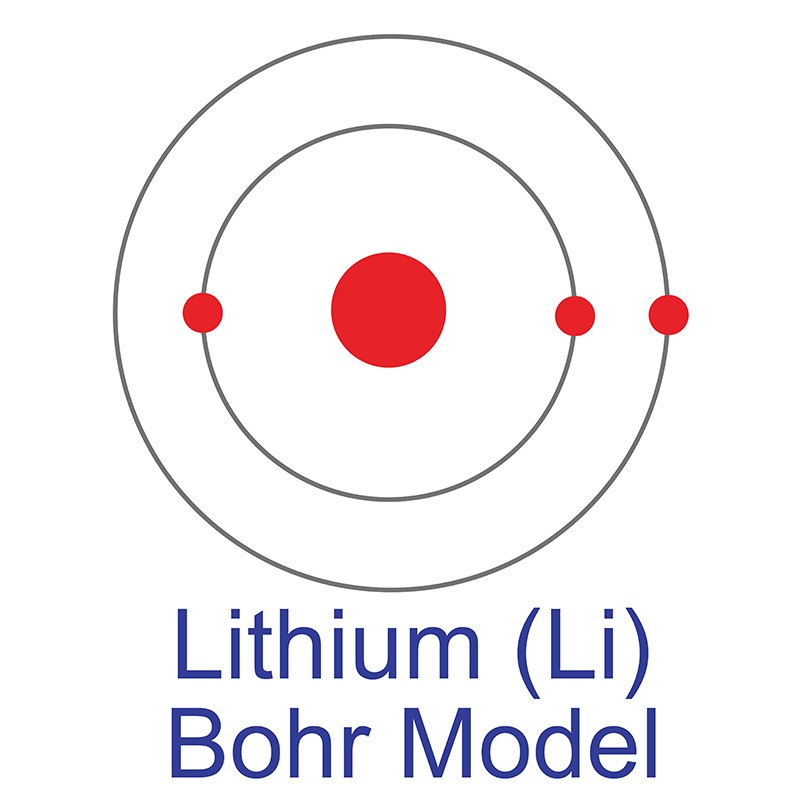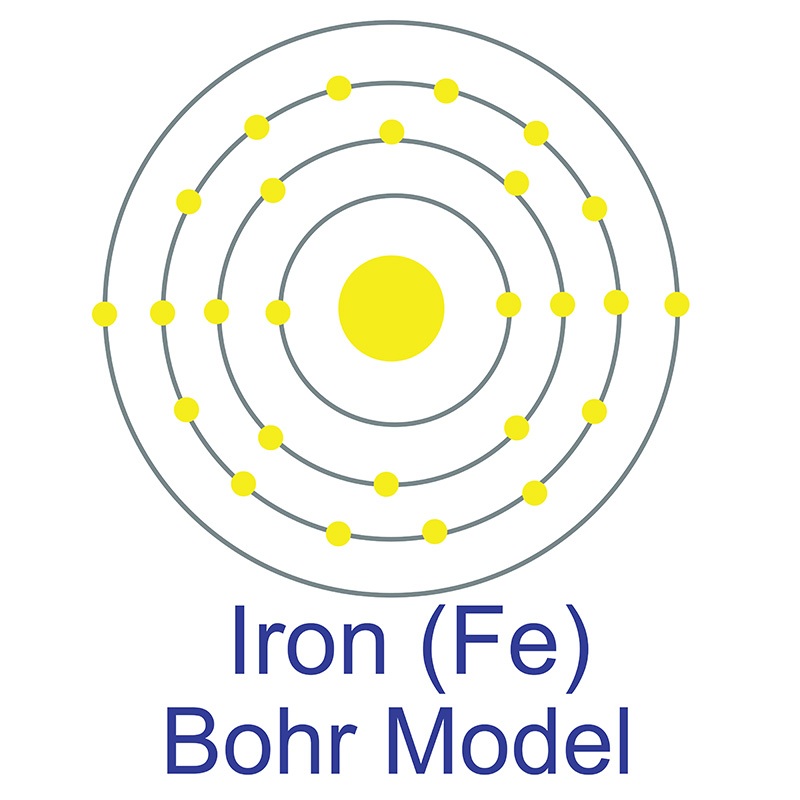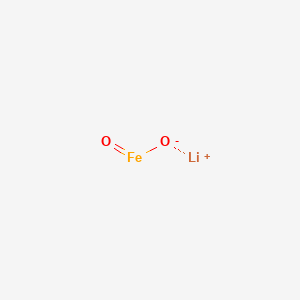SECTION 1. IDENTIFICATION
Product Name: Lithium Iron(III) Oxide
Product Number: All applicable American Elements product codes, e.g. LI-FEIT-02
, LI-FEIT-03
, LI-FEIT-04
, LI-FEIT-05
CAS #: 12022-46-7
Relevant identified uses of the substance: Scientific research and development
Supplier details:
American Elements
10884 Weyburn Ave.
Los Angeles, CA 90024
Tel: +1 310-208-0551
Fax: +1 310-208-0351
Emergency telephone number:
Domestic, North America: +1 800-424-9300
International: +1 703-527-3887
SECTION 2. HAZARDS IDENTIFICATION
Classification of the substance or mixture
GHS Classification in accordance with 29 CFR 1910 (OSHA HCS)
Acute toxicity, Oral (Category 4), H302
Acute toxicity, Inhalation (Category 4), H332
Acute toxicity, Dermal (Category 4), H312
Effects on or via lactation, H362
GHS Label elements, including precautionary statements
Pictogram

Signal word Warning
Hazard statement(s)
H302 + H312 + H332 Harmful if swallowed, in contact with skin or if inhaled.
H362 May cause harm to breast-fed children.
Precautionary statement(s)
P201 Obtain special instructions before use.
P260 Do not breathe dust or mist.
P263 Avoid contact during pregnancy/ while nursing.
P264 Wash skin thoroughly after handling.
P270 Do not eat, drink or smoke when using this product.
P271 Use only outdoors or in a well-ventilated area.
P280 Wear protective gloves/ protective clothing.
P301 + P312 + P330 IF SWALLOWED: Call a POISON CENTER/doctor if you feel
unwell. Rinse mouth.
P302 + P352 + P312 IF ON SKIN: Wash with plenty of water. Call a POISON
CENTER/doctor if you feel unwell.
P304 + P340 + P312 IF INHALED: Remove person to fresh air and keep comfortable
for breathing. Call a POISON CENTER/doctor if you feel unwell.
P308 + P313 IF exposed or concerned: Get medical advice/ attention.
P363 Wash contaminated clothing before reuse.
P501 Dispose of contents/ container to an approved waste disposal
plant.
Hazards not otherwise classified (HNOC) or not covered by GHS - none
SECTION 3. COMPOSITION/INFORMATION ON INGREDIENTS
Substances
Synonyms : Lithium ferrite
Formula : FeLiO2
Molecular weight : 94.78 g/mol
CAS-No. : 12022-46-7
SECTION 4. FIRST AID MEASURES
Description of first aid measures
General advice
Consult a physician. Show this safety data sheet to the doctor in attendance.Move out of
dangerous area.
If inhaled
If breathed in, move person into fresh air. If not breathing, give artificial respiration.
Consult a physician.
In case of skin contact
Wash off with soap and plenty of water. Consult a physician.
In case of eye contact
Flush eyes with water as a precaution.
If swallowed
Never give anything by mouth to an unconscious person. Rinse mouth with water. Consult
a physician.
Most important symptoms and effects, both acute and delayed
The most important known symptoms and effects are described in the labelling (see section
2) and/or in section 11
Indication of any immediate medical attention and special treatment needed
No data available
SECTION 5. FIREFIGHTING MEASURES
Extinguishing media
Suitable extinguishing media
Use water spray, alcohol-resistant foam, dry chemical or carbon dioxide.
Special hazards arising from the substance or mixture
Lithium oxides, Iron oxides
Advice for firefighters
Wear self-contained breathing apparatus for firefighting if necessary.
Further information
No data available
SECTION 6. ACCIDENTAL RELEASE MEASURES
Personal precautions, protective equipment and emergency procedures
Use personal protective equipment. Avoid dust formation. Avoid breathing vapours, mist
or gas. Ensure adequate ventilation. Evacuate personnel to safe areas. Avoid breathing
dust.
For personal protection see section 8.
Environmental precautions
Prevent further leakage or spillage if safe to do so. Do not let product enter drains.
Methods and materials for containment and cleaning up
Pick up and arrange disposal without creating dust. Sweep up and shovel. Keep in
suitable, closed containers for disposal.
Reference to other sections
For disposal see section 13.
SECTION 7. HANDLING AND STORAGE
Precautions for safe handling
Avoid contact with skin and eyes. Avoid formation of dust and aerosols.Further processing
of solid materials may result in the formation of combustible dusts. The potential for combustible dust formation should be taken into consideration before additional processing
occurs.
Provide appropriate exhaust ventilation at places where dust is formed.
For precautions see section 2.
Conditions for safe storage, including any incompatibilities
Keep container tightly closed in a dry and well-ventilated place.
Keep in a dry place.
Storage class (TRGS 510): 6.1C: Combustible, acute toxic Cat.3 / toxic compounds or
compounds which causing chronic effects
Specific end use(s)
Apart from the uses mentioned in section 1 no other specific uses are stipulated
SECTION 8. EXPOSURE CONTROLS/PERSONAL PROTECTION
Control parameters
Components with workplace control parameters
Contains no substances with occupational exposure limit values.
Exposure controls
Appropriate engineering controls
Handle in accordance with good industrial hygiene and safety practice. Wash hands
before breaks and at the end of workday.
Personal protective equipment
Eye/face protection
Safety glasses with side-shields conforming to EN166 Use equipment for eye
protection tested and approved under appropriate government standards such as
NIOSH (US) or EN 166(EU).
Skin protection
Handle with gloves. Gloves must be inspected prior to use. Use proper glove
removal technique (without touching glove's outer surface) to avoid skin contact
with this product. Dispose of contaminated gloves after use in accordance with
applicable laws and good laboratory practices. Wash and dry hands.
Body Protection
Complete suit protecting against chemicals, The type of protective equipment must
be selected according to the concentration and amount of the dangerous substance
at the specific workplace.
Respiratory protection
Where risk assessment shows air-purifying respirators are appropriate use a fullface
particle respirator type N100 (US) or type P3 (EN 143) respirator cartridges as
a backup to engineering controls. If the respirator is the sole means of protection,
use a full-face supplied air respirator. Use respirators and components tested and
approved under appropriate government standards such as NIOSH (US) or CEN
(EU).
Control of environmental exposure
Prevent further leakage or spillage if safe to do so. Do not let product enter drains.
SECTION 9. PHYSICAL AND CHEMICAL PROPERTIES
Information on basic physical and chemical properties
a) Appearance Form: powder
b) Odour No data available
c) Odour Threshold No data available
d) pH No data available
e) Melting point/freezing point
No data available
f) Initial boiling point and boiling range
No data available
g) Flash point ()Not applicable
h) Evaporation rate No data available
i) Flammability (solid, gas)
No data available
j) Upper/lower flammability or explosive limits
No data available
k) Vapour pressure No data available
l) Vapour density No data available
m) Relative density 1.9 g/cm3 at 25 °C (77 °F)
n) Water solubility No data available
o) Partition coefficient: n-octanol/water
No data available
p) Auto-ignition temperature
No data available
q) Decomposition temperature
No data available
r) Viscosity No data available
s) Explosive properties No data available
t) Oxidizing properties No data available
Other safety information
No data available
SECTION 10. STABILITY AND REACTIVITY
Reactivity
No data available
Chemical stability
Stable under recommended storage conditions.
Possibility of hazardous reactions
No data available
Conditions to avoid
Avoid moisture.
Incompatible materials
Strong oxidizing agents
Hazardous decomposition products
Hazardous decomposition products formed under fire conditions. - Lithium oxides, Iron
oxides
Other decomposition products - No data available
In the event of fire: see section 5
SECTION 11. TOXICOLOGICAL INFORMATION
Information on toxicological effects
Acute toxicity
No data available
No data available
Skin corrosion/irritation
No data available
Serious eye damage/eye irritation
No data available
Respiratory or skin sensitisation
No data available
Germ cell mutagenicity
No data available
Carcinogenicity
IARC: No component of this product present at levels greater than or equal to 0.1% is
identified as probable, possible or confirmed human carcinogen by IARC.
NTP: No component of this product present at levels greater than or equal to 0.1% is
identified as a known or anticipated carcinogen by NTP.
OSHA: No component of this product present at levels greater than or equal to 0.1% is
on OSHA’s list of regulated carcinogens.
Reproductive toxicity
Effects on or via lactation
No data available
Specific target organ toxicity - single exposure
No data available
Specific target organ toxicity - repeated exposure
No data available
Aspiration hazard
No data available
Additional Information
RTECS: Not available
To the best of our knowledge, the chemical, physical, and toxicological properties have not
been thoroughly investigated., Large doses of lithium ion have caused dizziness and
prostration, and can cause kidney damage if sodium intake is limited. Dehydration, weight
loss, dermatological effects, and thyroid disturbances have been reported. Central nervous
system effects that include slurred speech, blurred vision, sensory loss, ataxia, and
convulsions may occur. Diarrhea, vomiting, and neuromuscular effects such as tremor,
clonus, and hyperactive reflexes may occur as a result of repeated exposure to lithium ion.,
Cyanosis and t-wave inversion have occurred in the breast-fed infants of women receiving
lithium carbonate therapy., prolonged or repeated exposure can cause:, Vomiting,
Diarrhoea, Drowsiness, Weakness, Incoordination.
Stomach - Irregularities - Based on Human Evidence
Stomach - Irregularities - Based on Human Evidence
SECTION 12. ECOLOGICAL INFORMATION
Toxicity
No data available
Persistence and degradability
No data available
Bioaccumulative potential
No data available
Mobility in soil
No data available
Results of PBT and vPvB assessment
PBT/vPvB assessment not available as chemical safety assessment not required/not
conducted
Other adverse effects
No data available
SECTION 13. DISPOSAL CONSIDERATIONS
Waste treatment methods
Product
Offer surplus and non-recyclable solutions to a licensed disposal company. Contact a
licensed professional waste disposal service to dispose of this material. Dissolve or mix
the material with a combustible solvent and burn in a chemical incinerator equipped with
an afterburner and scrubber.
Contaminated packaging
Dispose of as unused product.
SECTION 14. TRANSPORT INFORMATION
DOT (US)
Not dangerous goods
IMDG
Not dangerous goods
IATA
Not dangerous goods
SECTION 15. REGULATORY INFORMATION
SARA 302 Components
No chemicals in this material are subject to the reporting requirements of SARA Title III,
Section 302.
SARA 313 Components
This material does not contain any chemical components with known CAS numbers that
exceed the threshold (De Minimis) reporting levels established by SARA Title III, Section
313.
SARA 311/312 Hazards
Acute Health Hazard, Chronic Health Hazard
Massachusetts Right To Know Components
No components are subject to the Massachusetts Right to Know Act.
No components are subject to the Massachusetts Right to Know Act.
SECTION 16. OTHER INFORMATION
Safety Data Sheet according to Regulation (EC) No. 1907/2006 (REACH). The above information is believed to be correct but does not purport to be all inclusive and shall be used only as a guide. The information in this document is based on the present state of our knowledge and is applicable to the product with regard to appropriate safety precautions. It does not represent any guarantee of the properties of the product. American Elements shall not be held liable for any damage resulting from handling or from contact with the above product. See reverse side of invoice or packing slip for additional terms and conditions of sale. COPYRIGHT 1997-2022 AMERICAN ELEMENTS. LICENSED GRANTED TO MAKE UNLIMITED PAPER COPIES FOR INTERNAL USE ONLY.
 See more Lithium products.
See more Lithium products. Compared to other metals, it has one of the lowest boiling points. In its elemental form, lithium is soft enough to cut with a knife its silvery white appearance quickly darkens when exposed to air. Because of its high reactivity, elemental lithium does not occur in nature. Lithium is the key component of
Compared to other metals, it has one of the lowest boiling points. In its elemental form, lithium is soft enough to cut with a knife its silvery white appearance quickly darkens when exposed to air. Because of its high reactivity, elemental lithium does not occur in nature. Lithium is the key component of  The iron atom has a radius of 126 pm and a Van der Waals radius of 194 pm. Iron was discovered by humans before 5000 BC. In its elemental form, iron has a lustrous grayish metallic appearance. Iron is the fourth most common element in the Earth's crust and the most common element by mass forming the earth as a whole. Iron is rarely found as a free element, since it tends to oxidize easily; it is usually found in minerals such as magnetite, hematite, goethite, limonite, or siderite.
The iron atom has a radius of 126 pm and a Van der Waals radius of 194 pm. Iron was discovered by humans before 5000 BC. In its elemental form, iron has a lustrous grayish metallic appearance. Iron is the fourth most common element in the Earth's crust and the most common element by mass forming the earth as a whole. Iron is rarely found as a free element, since it tends to oxidize easily; it is usually found in minerals such as magnetite, hematite, goethite, limonite, or siderite. Though pure iron is typically soft, the addition of carbon creates the
Though pure iron is typically soft, the addition of carbon creates the 
